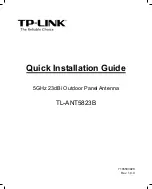
- 5 -
DXE-RADW Radial Wire Kits and Components:
There are optional DX Engineering Radial Wire Kits available.
DXE-RADW-500K/BD
contains a
500 foot spool of 14 gauge copper stranded wire with black PVC insulation, 20 Terminal Lugs and
100 Steel or Biodegradable Lawn Staples. The
DXE-RADW-1000K/BD
Radial Wire Kit contains
a 1,000 foot spool of 14 gauge copper stranded wire with black PVC insulation, 40 Terminal Lugs
and 200 Steel or Biodegradable Lawn Staples.
RADW-20RT, -32RT
or -
65RT
contain 20 each
radial wires with 1/4" terminal attached. These kits come in 20 Ft, 32 Ft, or 65 Ft lengths.
DXE-GUY-200
Guying Kit for Vertical Antennas:
Some vertical manufacturers indicate their antennas do not need guying. During times
of high winds or ice loading, some of these verticals may sustain damage or fail
altogether. With the small amount of effort needed to install a four point guying system,
the risk hardly seems worth taking. A four-point guying scheme provides the best
mechanical advantage to reduce wind stress, regardless of direction. A four point
guying system is recommended for use with the DX Engineering Tilt Base, because just
one of the guy ropes has to be loosened when you tilt the vertical down. The remaining
guys help stabilize the vertical in three directions when being raised.
Tools Required
Two 7/16” wrenches, (one of them should be open-end)
5/16”, 3/8”, 7/16”, and 1/2” wrenches or
5/16”, 3/8”, 7/16”, and 1/2” sockets and drive
Medium size flat blade screwdriver or 5/16” nut driver for the element clamps
Tape measure
Felt-tip marker
WARNING!
INSTALLATION OF ANY ANTENNA NEAR POWER LINES IS DANGEROUS
Warning
:
Do not locate the antenna near overhead power lines or other electric light or power
circuits, or where it can come into contact with such circuits. When installing the antenna, take
extreme care not to come into contact with such circuits, because they may cause serious injury or
death.
Overhead Power Line Safety
Before you begin working, check carefully for overhead power lines in the area you will be
working. Don't assume that wires are telephone or cable lines: check with your electric utility for
advice. Although overhead power lines may appear to be insulated, often these coverings are
intended only to protect metal wires from weather conditions and may not protect you from electric
shock







































